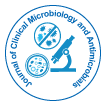

Commentary - (2023)Volume 7, Issue 3
In an era of escalating concern over antibiotic resistance and the drawbacks of synthetic drugs, researchers and healthcare professionals are increasingly turning their attention toward natural antimicrobials as potential game-changers in the fight against infectious diseases in humans. Natural antimicrobials, compounds derived from a variety of sources, offer a promising avenue for combating a wide range of pathogens. These antimicrobials, found in plants, animals, and microorganisms, have shown remarkable effectiveness in inhibiting or eradicating harmful microorganisms such as bacteria, viruses, fungi, and parasites.
Bounty of natural antimicrobials
Natural antimicrobials are a diverse and abundant resource, drawing from a variety of sources:
Plants: Nature's pharmacy is rich in herbs, spices, and medicinal plants, many of which produce compounds with potent antimicrobial properties. For example, garlic contains allicin, renowned for its antibacterial and antiviral effects, while curcumin in turmeric is celebrated for its anti-inflammatory and antimicrobial properties.
Animals: Certain animals employ antimicrobial peptides as part of their immune defenses. Frogs, for instance, secrete peptides on their skin that protect them from harmful bacteria and fungi. Bee venom is another example, known for its antimicrobial properties and potential therapeutic applications.
Microorganisms: Ironically, some of the most potent natural antimicrobials are produced by bacteria themselves. Bacteriocins, for instance, are proteins synthesized by certain bacteria and have exhibited promising antimicrobial effects, particularly against foodborne pathogens.
Marine life: The ocean is a treasure trove of unique antimicrobial compounds, with coral reefs, sponges, and various marine microorganisms being explored for their potential in combating infectious diseases.
Mechanisms of action
Natural antimicrobials operate through diverse mechanisms that render them effective against a wide spectrum of pathogens. Common mechanisms include:
Cell membrane disruption: Many natural antimicrobials disrupt the integrity of microorganisms' cell membranes, leading to leakage of essential cell components and eventual cell death.
Inhibition of protein synthesis: Some compounds target the protein synthesis machinery of pathogens, hindering their ability to grow and reproduce.
Interference with DNA/RNA: Certain natural antimicrobials can bind to nucleic acids, preventing the replication and transcription of genetic material in microorganisms.
Enzyme inhibition: Some compounds can inhibit specific enzymes crucial for the survival of microorganisms, rendering them ineffective.
Applications in human health
The potential applications of natural antimicrobials in human health are vast and promising:
Pharmaceutical advancements: Integrating natural antimicrobials into pharmaceuticals holds promise for treating infectious diseases. These compounds can complement existing antibiotics, potentially mitigating the emergence of antibioticresistant strains.
Infection control: In healthcare settings, natural antimicrobials can be incorporated into disinfectants and wound-care products to reduce the risk of infection transmission.
Nutraceuticals: Natural antimicrobials can be incorporated into dietary supplements, providing a holistic approach to immune support and disease prevention.
Challenges and considerations
While the potential of natural antimicrobials is encouraging, several challenges and considerations must be addressed:
Standardization: The composition of natural antimicrobials can vary based on factors such as source, growing conditions, and extraction methods. Standardization is essential to ensure consistent potency and efficacy.
Safety: Although natural, some antimicrobials can have side effects or interactions with medications. Rigorous safety assessments are crucial.
Resistance: Overuse or misuse of natural antimicrobials could lead to the development of resistant strains of microorganisms. Proper dosing and application are essential to avoid this pitfall.
Regulation: The regulatory landscape for natural antimicrobials is complex and varies by region. Clear guidelines and oversight are necessary to ensure their safe use in healthcare and consumer products.
Natural antimicrobials offer immense promise in the ongoing battle against infectious diseases in humans. Their diversity, effectiveness, and potential applications make them a compelling area of research and development. However, a cautious and responsible approach is imperative, ensuring standardization, safety, and judicious use.
Citation: Baran A (2023) Natural Antimicrobials against Infectious Diseases. J Clin Microbiol Antimicrob. 7:168.
Received: 17-Aug-2023, Manuscript No. JCMA-23-27200; Editor assigned: 21-Aug-2023, Pre QC No. JCMA-23-27200 (PQ); Reviewed: 05-Sep-2023, QC No. JCMA-23-27200; Revised: 12-Sep-2023, Manuscript No. JCMA-23-27200 (R); Published: 19-Sep-2023 , DOI: 10.35248/jcma.23.7.168
Copyright: © 2023 Baran A. This is an open-access article distributed under the terms of the Creative Commons Attribution License, which permits unrestricted use, distribution, and reproduction in any medium, provided the original author and source are credited.